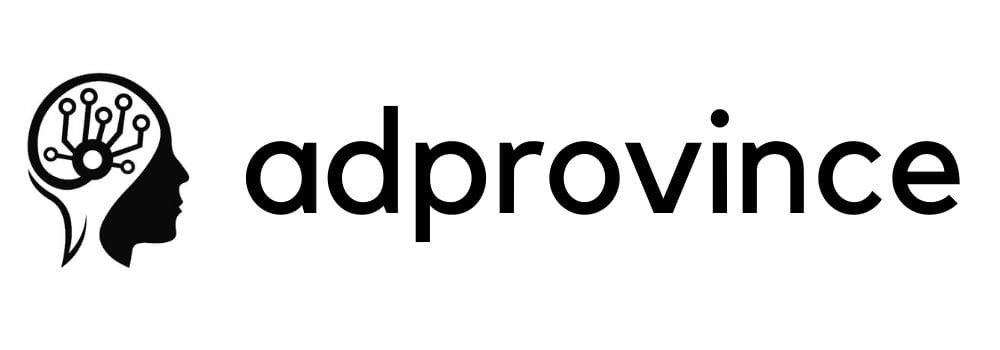
Creating an online course has never been easier, and with platforms like Wix and Typeform, you can monetize your expertise without dealing with technical headaches. Whether you’re a foodie looking to share your secret recipes, a fitness guru with a killer workout plan, or a coding genius ready to teach the next generation, Wix and Typeform offer a smooth path to set up a course and make it profitable. Ready to start sharing what you know (and get paid for it)? Here’s the lowdown on creating profitable online courses on Wix using Typeform.
Why Choose Wix and Typeform?
Alright, before we dive into the nitty-gritty, let’s talk about why Wix and Typeform make such a killer combo. Wix is a user-friendly website builder that lets you create beautiful, fully customizable websites. It’s drag-and-drop, so you don’t need to be a coding whiz to make a slick site.
Typeform, on the other hand, is all about interaction—it’s a form builder with personality. Instead of boring, traditional forms, you get to create something interactive that feels more like a conversation than a chore. Perfect for course quizzes, surveys, or feedback forms!
When you combine these two platforms, you get a seamless way to design your course, interact with students, collect payments, and build a community. Plus, it’s all in your control—no middlemen taking a cut of your hard-earned cash.
Step 1: Brainstorm Your Course Idea
Let’s start with the fun part—what will your course be about? Take a deep breath and think about your passions, skills, and areas of expertise. What do people always ask you about? What are you knowledgeable in that’s unique?
Maybe you’re a photography whiz or you’ve mastered time management. Choose a topic that excites you, because your enthusiasm (or lack thereof) will shine through in your content. Narrow it down to a specific niche—“Healthy Cooking for Busy Parents” is way more compelling than just “Cooking,” right?
Pro Tip: Use Typeform to send out a quick survey to your email list or social media followers. Ask what they’re struggling with and what they’d love to learn from you. You might discover a course idea you hadn’t thought of.
Step 2: Set Up Your Course Page on Wix
Now that you’ve got a clear idea, it’s time to build your course hub. Head over to Wix and create an account if you don’t already have one. Choose a template that fits the vibe of your course—modern, clean, or quirky, whatever suits your style.
Spend some time customizing it. Add your logo, play with colors, and tweak the fonts. You want the page to be visually appealing but not overwhelming. Keep it simple and intuitive. Your goal is to make it easy for students to understand what they’re getting.
Essential Sections to Include:
- Home Page: Introduce yourself and your course. What’s the benefit? What’s in it for them? This is your pitch—make it irresistible.
- Course Overview: Break down the course structure. Use bullet points or a simple timeline.
- Pricing & Enrollment: Make this page crystal clear. What’s the price, and how do they sign up? Use Wix’s built-in payment options for easy transactions.
- Testimonials & Social Proof: If you have any reviews, flaunt them. They can make a huge difference.
Step 3: Create Engaging Course Content
This is where you get to shine. Content is everything. Your material should be well-organized, engaging, and valuable. Nobody wants to pay for fluff! Structure your course into modules or sections—bite-sized lessons that don’t overwhelm.
Use a variety of formats:
- Videos: Record lessons with tools like Zoom or Loom. Keep them short and digestible, ideally 10-15 minutes max.
- Text Guides: Create downloadable PDFs or e-books. People love having something tangible to refer to.
- Quizzes: Here’s where Typeform comes in! Create engaging quizzes to test your students’ knowledge. The interactive format makes it fun and helps them retain information.
Pro Tip: Break the monotony. Alternate between video, text, quizzes, and slides to keep your course engaging. A blend of formats is often the most effective way to teach.
Step 4: Integrate Typeform for Interactivity
Now that your content is ready, it’s time to boost engagement. Typeform is fantastic for creating interactive quizzes, collecting feedback, or enrolling students. Here’s how you can use it:
- Quizzes: Use Typeform to create quizzes that assess what your students have learned in each module. These can be scored or just for fun.
- Enrollment Forms: Set up a stylish enrollment form that captures student information and preferences. Make it feel like a personal invitation.
- Feedback: After each module, add a feedback form. What did they love? What needs improvement? Use this data to tweak future content.
Integrating Typeform with Wix is a breeze. You can embed Typeform forms directly on your Wix site using HTML code or by adding a Typeform widget. It’s intuitive and takes just a few clicks.
Step 5: Set Up Payment and Membership Options
You’re almost ready to go live, but don’t forget the most crucial part—getting paid. Wix has a variety of options to handle payments, from one-time purchases to subscriptions. Here are a few ways you can monetize your course:
- One-time Fee: Charge a flat fee for the course.
- Memberships: Create a members-only section of your Wix site where paying students get access.
- Subscription: If you plan on regularly updating the course or offering ongoing content, a subscription model can be more lucrative.
Use Wix’s pricing plans to set up different payment tiers if you want to offer multiple packages. Maybe your basic course is $99, but a VIP package with one-on-one coaching is $299. You have options—play around until you find what fits.
Step 6: Launch and Promote Your Course
You’ve put in the work. Now it’s time to tell the world about your course. Use every platform at your disposal to market it—email lists, social media, blogs, and forums.
Create a buzz before you launch. Offer an early-bird discount, share sneak peeks, or provide a free mini-course to get potential students hooked. Don’t shy away from using Typeform here too. Create a simple survey to get potential students to leave their email in exchange for a freebie or discount.
Here are some promo ideas:
- Social Media Teasers: Share short clips from your course.
- Email Campaigns: Send out a countdown or a series of sneak peeks.
- Free Webinar: Use Typeform to register attendees for a free intro webinar. Get them excited and curious about the full course.
Step 7: Keep Improving and Engaging
Don’t just launch and leave. Keep your students engaged and your course up to date. Encourage participation through Typeform quizzes, create a community forum, and periodically add bonus content to keep members excited.
Listen to feedback, tweak your material, and adapt as you go. Online courses are never truly “finished”—they’re living projects that evolve with you.
Pro Tip: Don’t hesitate to reach out to past students for testimonials. People love seeing real experiences before they buy.
Step 8: Collect Student Feedback and Optimize
You’ve launched your course—great! But the journey doesn’t end there. To keep your course relevant and appealing, you need to know what’s working and what isn’t. This is where Typeform becomes your secret weapon. Send out periodic surveys to your students asking them what they liked, what they found challenging, and what they’d like to see more of. It’s the easiest way to fine-tune your material and ensure your course remains top-notch.
Feedback is gold. Use it to tweak lessons, add bonus content, or even remove sections that aren’t hitting the mark. Every piece of feedback is a stepping stone toward a more polished, engaging course.
Step 9: Build a Community Around Your Course
People love feeling like they’re part of a group. Building a community can increase retention rates and keep your students coming back. You can easily do this by creating a private forum or a Facebook group for course participants. Encourage students to ask questions, share their progress, and help each other out.
Typeform can also be used to create a “course satisfaction quiz” that gives students a personalized recommendation for what module or lesson to take next. This kind of interaction keeps them engaged and eager to learn more.
Pro Tip: Offer community-only perks, like exclusive Q&A sessions or bonus materials. It gives them an incentive to stay involved.
Step 10: Analyze Your Results and Scale Up
You’ve collected feedback, improved your content, and built a community—now it’s time to scale. Use analytics tools (Wix has a few built-in options, and Typeform offers great stats too) to track which marketing strategies are working, which lessons get the most engagement, and where your students drop off.
If your course is doing well, consider expanding it—add advanced modules, create a follow-up course, or offer a certification. You might even consider creating specialized versions of your course to target different niches or demographics.
Keep experimenting. If there’s one thing about online courses, it’s that they’re always evolving, just like your audience’s needs.




